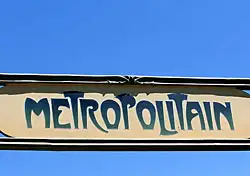
Don’t be apprehensive about navigating public transit just because you’re overseas. Transit systems in much of the world, especially in popular destinations, are at least as good as those at home and often better, and most include stops to the main airport. Earlier, I urged you to consider the many day passes and discounts on U.S. transit systems. Although hardly any foreign systems offer senior discounts, many sell day or longer “travel all you want” passes that target tourists who want to get around the city. Here’s a detailed look at the “big three” overseas destinations for American travelers plus some quickies about others, concentrating on easy-to-use rail options.
London: The number-one overseas destination is served by a vast and complex network of metros and suburban rail, with trams and buses for short hauls. The policy of British conservatives in government is to minimize public subsidies, so London’s fares are much higher than in most other countries. But so are local taxis, so transit still looks good.
When you arrive at Heathrow Airport, you have three rail options: The expensive Heathrow Express nonstop to Paddington ($34 one-way, $55 round-trip), the almost-as-fast Heathrow Connect to Paddington ($16 each way), or the slow and baggage-unfriendly underground ($9 each way). Gatwick also has both expensive and cheaper conventional rail options, but no underground; Luton (conventional) and Stansted (express) also have rail access.
Central-city underground single-ticket fares are astronomical: $8 for just one stop, so individual tickets make no sense at all. Instead, use one of two options:
- For short visits, use a Travel card: $15 for one day, off-peak for six zones, including Heathrow.
- For longer stays, buy a stored-value “Oyster Card,” including underground, “overground” local suburban rail (but not Heathrow or Gatwick trains), and buses. It cuts the single-ride price almost in half and the accumulated individual-ride charges automatically revert to a Travel Card rate if that’s lower.
Paris: Like London, Paris is served by an extensive transit complex of Metro (subway/elevated), regional rail, and bus service. Within the central area, Metro/bus tickets cost about $2.50 each or 10 for $19.
When you arrive at Charles de Gaulle Airport, catch the regional rail RATP (single ticket about $14 to central Paris). At Orly Airport, take the people-mover to Anthony, a suburban rail station near Orly, then RATP ($16 single ticket).
If you want to move around a lot, buy a Paris Visite all-day pass, $17 for one day to $53 for five days in the central area, $32 to $83, including de Gaulle. Also consider Navigo Decouverte, $36 to $55 for a calendar week (Monday through Sunday); requires photo.
Rome: Rome’s metro system isn’t as well developed as those in London or Paris, but it serves some of the main areas, and buses and trams do the rest.
When you arrive at Fiumicino Airport, hop an Airport Express, $14 to the central rail station.
To get around, individual tickets for metro, tram, or bus cost $1.40 for up to 75 minutes of riding. Passes cost $5.50 for one day, $15 for three days, or $22 for a week.
Other Areas: I’ve used public transit just about everywhere I’ve been that had transit service at the time, including Asia (Bangkok, Beijing, Dubai, Hong Kong, Osaka, and Tokyo) and Western Europe (most big cities), plus Bogota, Budapest, Buenos Aires, Istanbul, Krakow, Melbourne, Moscow, Rio, St. Petersburg, and Sydney. Even in countries that use a non-Latin alphabet, most systems issue system maps and post station names in the Latin alphabet along with the local language. Many of these systems make recorded station announcements in English, as well as in the local language. And most big and even midsize world cities now have direct rail airport access.
All in all, I’ve never encountered a problem in using local transportation. You can download maps and buy some tickets and passes online in advance of arrival. Also, many systems now provide apps for iPhone and other smart devices. There’s really no reason not to use transit. Don’t be intimidated; just go for it.
Ed Perkins Seniors on the Go is copyright (c) 2014 Tribune Media Services, Inc.
You Might Also Like:
We hand-pick everything we recommend and select items through testing and reviews. Some products are sent to us free of charge with no incentive to offer a favorable review. We offer our unbiased opinions and do not accept compensation to review products. All items are in stock and prices are accurate at the time of publication. If you buy something through our links, we may earn a commission.
Related
Top Fares From
Today's Top Travel Deals
Brought to you by ShermansTravel
France: 8-Night Paris, Avignon & Nice...
Infinity Worldwide Vacations
 vacation
$2880+
vacation
$2880+
Poconos: 3 Nts in Garden of...
ResortsAndLodges.com
 hotel
$305+
hotel
$305+
7-Nt Canada & New England Cruise,...
Princess Cruises
 cruise
$839+
cruise
$839+



